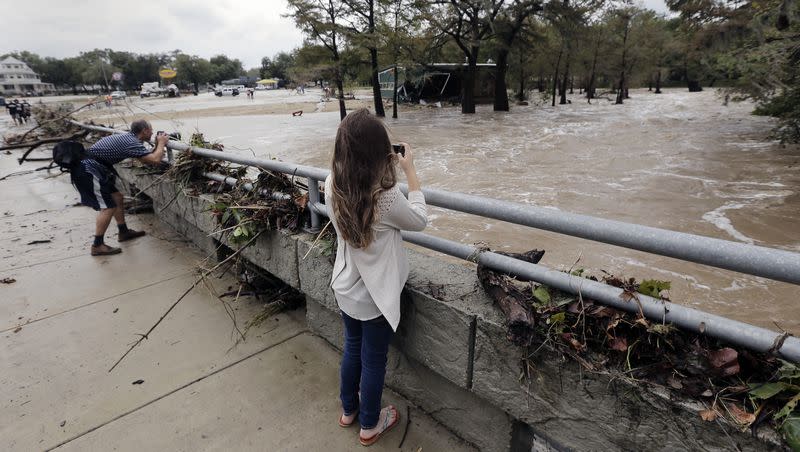Higher category needed for hurricanes, study says

In a new study published on Feb. 5 in Proceedings of the National Academy of Sciences, researchers suggest that a new, higher category of hurricane is needed.
The study, titled “The growing inadequacy of an open-ended Saffir–Simpson hurricane wind scale in a warming world,” explains that, due to the effects of climate change on the oceans, tropical cyclones (hurricanes) are becoming more intense.
The current system for classifying hurricanes doesn’t account for this growing intensity and, therefore, doesn’t adequately warn the public about the intensity of some storms, the report’s authors claim.
How does the hurricane classification system work?
The intensity of hurricanes is assessed using the Saffir-Simpson Hurricane Wind Scale.
According to the National Hurricane Center, this scale rates each hurricane from 1 to 5 based on wind speed.
Category 1 is for wind speeds from 74-95 mph.
Category 2 is for wind speeds from 96-110 mph.
Category 3 is for wind speeds from 111-129 mph.
Category 4 is for wind speeds from 130-156 mph.
Category 5 is for wind speeds 157 mph or higher.
The Saffir-Simpson scale does not account for other hazards such as storm surges, rainfall or tornadoes, according to the National Hurricane Center. But it does give estimates for potential property damage, ranging from the potential for home damage and power outages at Category 1 to catastrophic damage and uninhabitable zones at Category 5.
Why is a new category needed?
According to the study, the number of Category 5 hurricanes has risen over the past 40 years. Out of the 197 hurricanes observed to be Category 5 from 1980 through 2021, half of those storms occurred after 2004.
And not only is the amount of Category 5 storms rising, their intensity is rising, too. Of those storms that occurred after 2004, five would fit into the proposed Category 6, which includes all storms with sustained winds of 192 mph hour or above, per The Guardian.
These storms include Typhoon Haiyan, which killed 6,300 people in the Philippines in 2013; Hurricane Patricia, which reached a top speed of 207 mph in 2015; and Typhoon Surigae, which reached a top speed of 196 mph in 2021, per Fox Weather.
The authors of the study, Michael Wehner, a scientist at the Lawrence Berkeley National Laboratory, and James Kossin, of the University of Wisconsin-Madison, worry about the limitations of the Saffir-Simpson Scale. Wehner and Kossin wrote that they want to “raise awareness that the wind-hazard risk from storms presently designated as category 5 has increased and will continue to increase under climate change.”
They think that the current broad definition for Category 5, which is a storm with wind speeds of 157 mph or higher, can lead to underestimation of the severity of new storms and put the public in danger, per Fox Weather.
The difference between a 157 mph storm and a 192 mph storm is significant. “The stronger the wind, the stronger the storm surge,” Wehner said, according to CBS News.
What effects will these stronger hurricanes have?
According to the Center for Climate and Energy Solutions, hurricanes have the possibility of causing significant damages and problems. In addition to threatening lives and homes, hurricanes damage infrastructure, stall energy productions, damage water and waste systems and affect other forms of transportation and travel.
As sea levels rise and the risk of flooding intensifies, stronger storms stand to cause even more damage.

